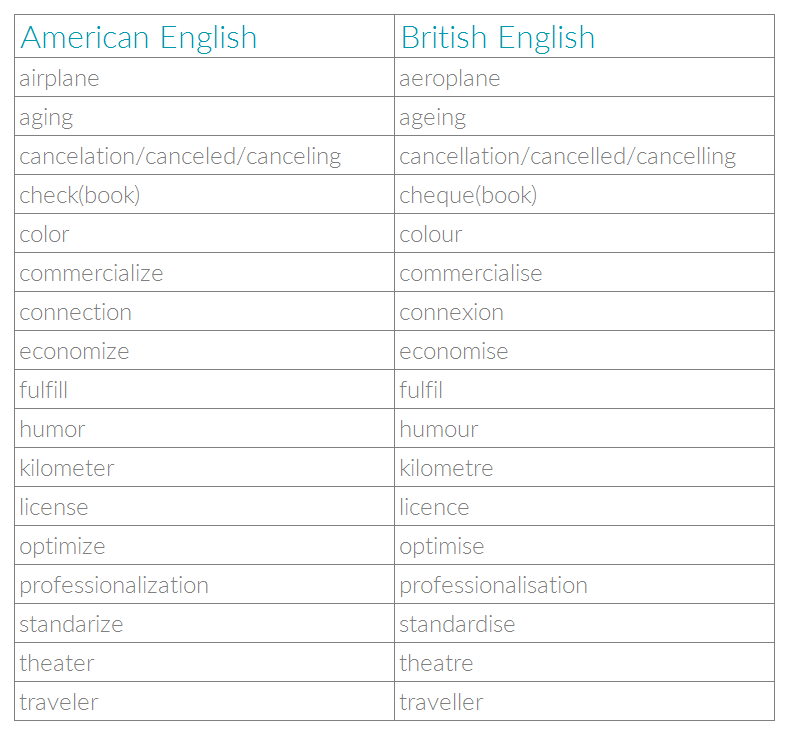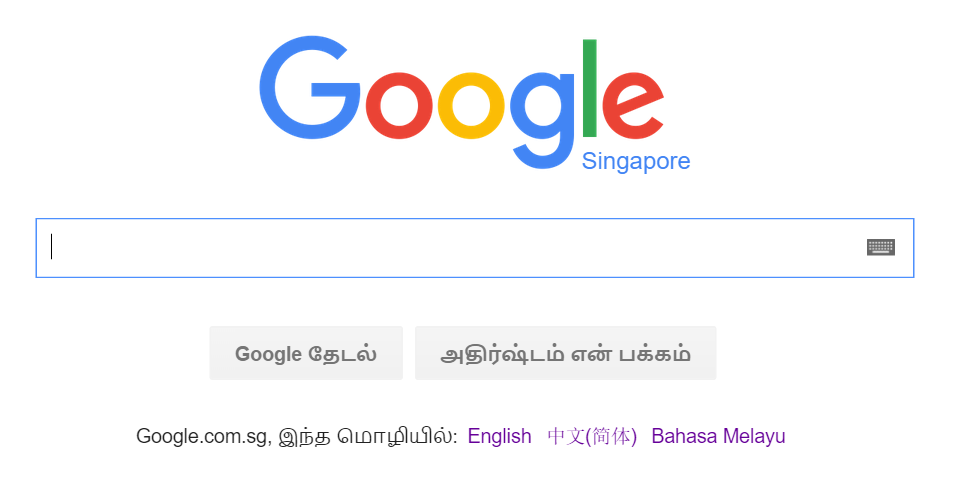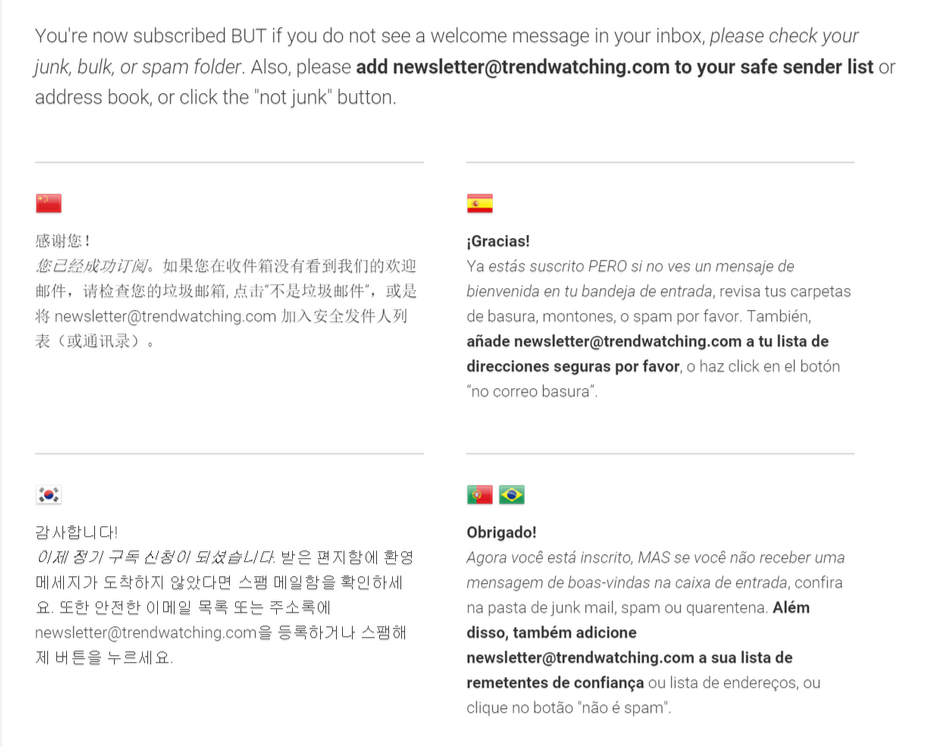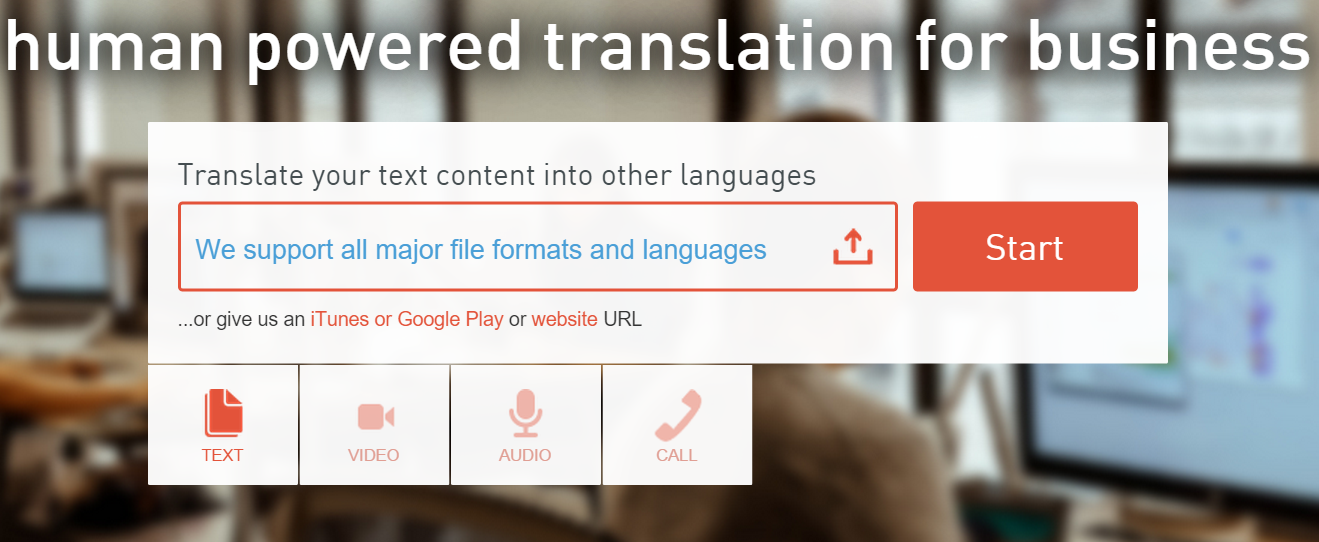
KNOWLEDGE BASE Language Localization For Singapore
The information on this page was current at the time it was published. Regulations, trends, statistics, and other information are constantly changing. While we strive to update our Knowledge Base, we strongly suggest you use these pages as a general guide and be sure to verify any regulations, statistics, guidelines, or other information that are important to your efforts.
Language Localization for Singapore
Singapore's official languages
There are four official languages in Singapore - English, Mandarin, Malay, and Tamil - along with a sprinkling of other languages. That being said, English is the “universal language” in Singapore and you can use it throughout all industries to carry out your business. While using English as the language of communication in your products and in your campaigns is a safe bet, there are still some things that you should consider before thinking that you do not need to do some form of language localization for the Singapore market.
Spelling conventions in Singapore
If you have determined that English is your primary language of communications, keep in mind that Singapore was a British Colony and their English is based on British English; therefore, the spelling of some common words differs between British and American English. By adjusting your copy and content to local spelling conventions, your website, service, app, and marketing will feel more local to Singaporean users. There can also be significant differences in usage and word meaning between English-speaking countries and. Those subtle things are noticed by residents and can influence their decision to work with your company.
Here’s a list of some common words that are spelled differently between American and British English. Look for these and others as you read through your content.
You can easily find lists of words that are spelled differently between British and American English.
Ways to localize for language
Identify and remove all slang before doing any translating for Singapore
If you are going to use a language other than your own on your website, app, or marketing materials, it’s often not enough to use the free translation tools to translate your site or app. Context and meaning don’t necessarily directly translate very well. If you are on a tight budget, you can use a free translation tool such as Google Translate. There are steps you should take to improve the accuracy and likelihood that your app isn’t complete gibberish.
Grab all of the copy on your website and app and review it to see if you’re using terms and sentences that are not direct descriptions and only have meaning in your own country and region. If you can find a local student or other trustworthy person, have them review your copy as well to look for anything that might confuse, inadvertently insult, or turn away a local potential customer.
Some examples of things we say in the US that probably mean absolutely nothing elsewhere include:
-
Back to the drawing board
-
Pick, pack, ship
-
MVP
-
Hit the ground running
-
Hit it out of the park
-
Deepen the relationship with
-
Low-hanging fruit
-
Thinking outside the box
-
Let’s touch base
-
On your radar
-
Having the bandwidth
-
Par for the course
-
Bang for your buck
Make sure everything is relevant and should be translated
Before you start translating your content, think about those things that actually shouldn’t be translated - they should be updated for the local market. For instance, contact names, addresses, and phone numbers fall into this category. If you are selling a limited product or service line in this market, remove those from your site or if you can’t remove them, be clear that they are sold in limited markets.
Options for sites with multiple language versions or with mixed languages
Even if English is the primary language of your site, you may want the flexibility to offer other languages as well. Google.com.sg, the most visited site in Singapore, gives users the option to toggle between 4 different languages.
Hardwarezone.com has five different country versions, three in English and the two in other languages. Since Hardware Zone markets to consumers in multiple countries, it has localized its site for multiple languages. Depending on which country is selected in the footer, English or another language will be presented.
This version, the Singapore version, displays the site and footer in English.
This version displays the the site in Thai. Since the country selector is in the same spot in each version, a user can toggle between them.
Another option is to offer multiple translations on one page. While it implies some coding requirements, it does get the job done in view. This welcome email from Trendwatching.com offers up the welcome message in more than one language at once, including the English in which it was sent.
Other top sites, such as Facebook and YouTube, are platforms that are essentially localized by their users, who enter content in their own languages. The sites are coded to allow for multiple languages.
Stick to one language per page
Google does not read the language coding on pages and will try to work the language out by itself. Therefore, it recommends that you use just one language per page. Since your international SEO strategy is tied to the words on your page, increase your success by minimizing how much you use more than one language on any page. Instead, develop pages for each language that you use.
Use a translation service
If you have just a little budget, by paying a couple of hundred dollars you will have a much more accurate translation using one of the new translation services that are either all human translation by locals such as VerbalizeIt, or combined machine and human translation such as Localize JS, a 2015 Techstars company, and Gengo, a 500 Startups company. All of these offer much higher quality translations at a reasonable price.
Code to support multiple languages
You can code for language and it’s a good idea if you have the resources. There are many aspects to multi-language sites that can be improved through coding. For example:
-
The language you use may be segregated by page or by site, but there may be times that you use multiple languages on one page. Defining the language in your code is a good idea.
-
Adjust for font size depending on which language is being displayed. The correct font size for English, for instance, will be too small for reading Chinese characters.
-
Think about how your page layout should change for languages that are not read left-to-right. If the language goes from right to left, think about right-justifying your content to match.
-
Justification of content
-
Word length varies by language. Take this into account as you design the layout of your pages and build in the length of features such as search bars. What may fit in one language will not automatically work in another language.
Having some sort of international appeal can be attractive and using a mix of languages on your app and website might be the best approach for you. Even with B2B companies where English is the default business language, it’s probably helpful to have detailed information in the local language but headlines and promotional copy in English. For more information on how to make sure your site is built to support multiple languages and accessibility in multiple languages, see our section on Structural Product Localization.
While you should be using localized language in your communications, you may also run across Singlish in your daily interactions. Many Singaporeans use Singlish to communicate in daily life. Singlish is a mix of English and other languages used in Singapore. While Singlish is common for Singaporeans to use in informal situations, it would appear amusing to them if a non-Native were to use it - or downright insulting if it was being made fun of. Be very careful about using any Singlish in your personal or business communications in order to avoid missing the mark. And Singlish is not appropriate for business settings. Phrases in Singlish may end in terms such as “lah”, “leh”, and “mah”, which are taken from the other languages spoken in Singapore.
Examples:
OK lah, bye bye.
Don't like that lah.
You are going there ah?
No parking lots here, what.
The price is too high for me lah.
And then how many rooms ah?
It is very troublesome ley.
Don't be like that ley!
I'm not at home lah. That's why ah.

For a deep dive on languages in Singapore, check out the Singapore Department of Statistics
KNOWLEDGE BASE Language Localization For Singapore








